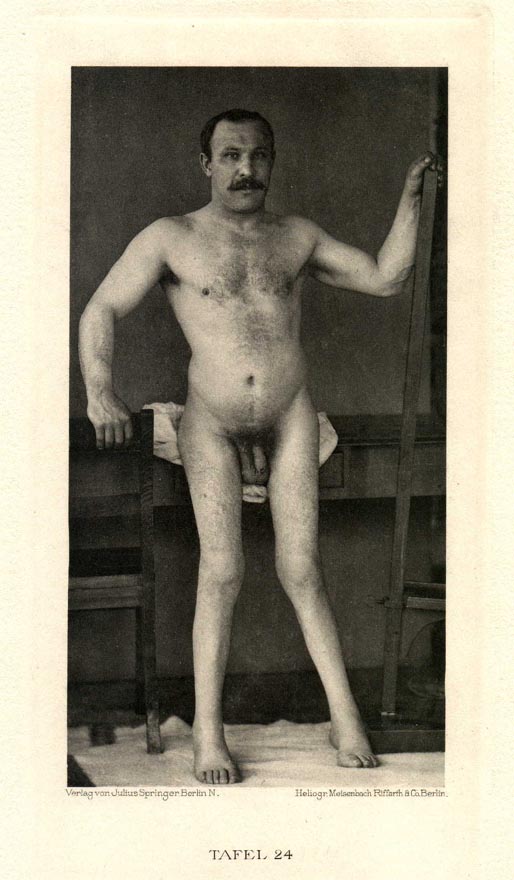

Very distinctive case for this form of disease involving an adult. The thirty year old, hereditarily unencumbered man, healthy and completely capable of work until nine days before admission into the hospital when he suddenly succumbed to fevers, beset with the symptoms of prickling and chills in the legs brought on by shivering, to which a considerable lassitude was at once associated.
The following morning when he woke out of a fitful sleep, both legs were completely paralyzed. At the same time apposed a high grade deficiency of the back and abdominal musculature, such that the patient could not right himself and only with difficulty could he deploy the abdominal press. Bladder and rectum not paralyzed. There was further wasting in the legs from paresthesia, the nerve trunk, skin and muscles neither voluntary nor sensitive to pressure.
While the abdominal and back muscles became partially reinvigorated in the immediately following course of time, the muscle capacity of the lower extremities, steadily more and more atrophied, remained persistently abrogated. These same dgenerative reactions dragged on for a long time. This is no longer true at the time of photographing of the picture. Now the legs hang perfectly slack. They would be passively prepared for the patient according to the presupposed body posture and were locked in their locomotion, which takes place only in the hands. Patellar tendon reflex is completely extinct.
The photograph shows the patient supported by both arms (and from behind) leaning into the table. A harsh contrast of the figure forms in the slight volume of the legs commensurate to the puissantly evolved thorax and arm musculature to which is assigned the locomotion of the body, occuring vicariously for a long time.
